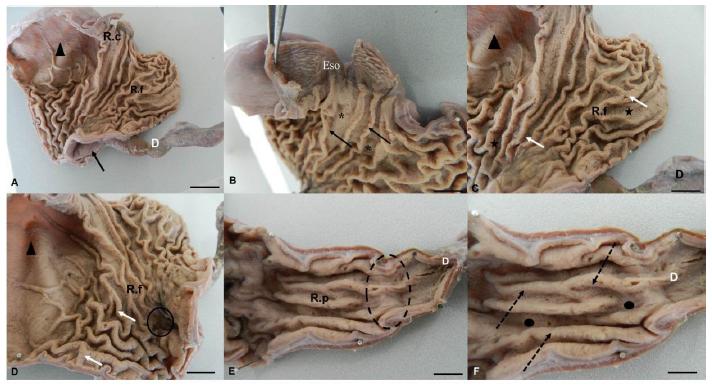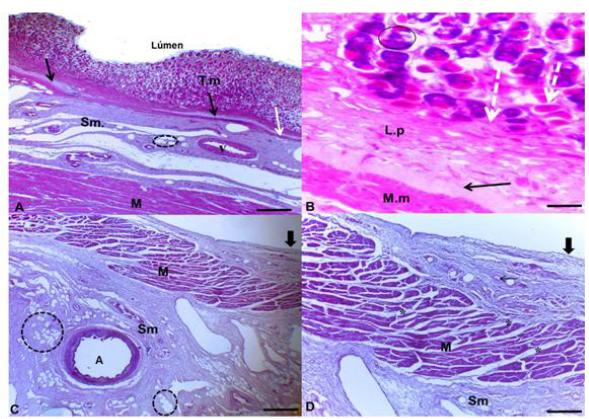ABSTRACT
The species Leopardus pardalis is one of the species of neotropical felines more studied in its ecological aspects, however, information of morphophysiological questions of the digestive tract are not found in the literature. Aiming to contribute with such information, the objective of this work was to characterize the morphology of the stomach of this species. Five adult specimens, collected after death by trampling, or donated by IBAMA to the Laboratory of Zoology and Animal Morphology of the University of the State of Mato Grosso - Alta Floresta, were used in this research. The animals were fixed with aqueous solution of formaldehyde 10%, dissected through the basic techniques and instruments of anatomy, and later the material was collected for microscopy. The macroscopic analysis revealed that the stomach was of the unicavitary type, with small and great curvature, located in the left antimer and constituted by the characteristic regions of the organ. In its microscopic aspects it was formed by the four usual tunics of the digestive tube: tunica mucosa, submucosa, muscular and serosa, each one with the peculiarities characteristic of each region, mainly in the tunica mucosa. The stomach of L. pardalis revealed similar morphology to the domestic and wild species, with small histomorphological peculiarities in the pyloric region, which may be related to evolutionary adaptations in the digestive process of this species.
Keywords:
Leopardus pardalis; morphology; pyloric region





